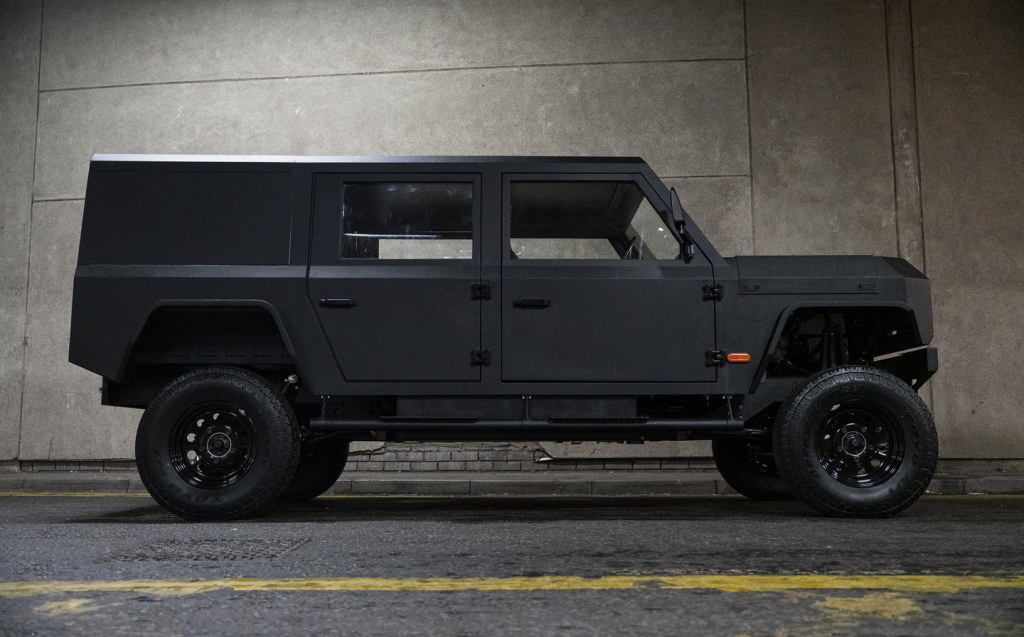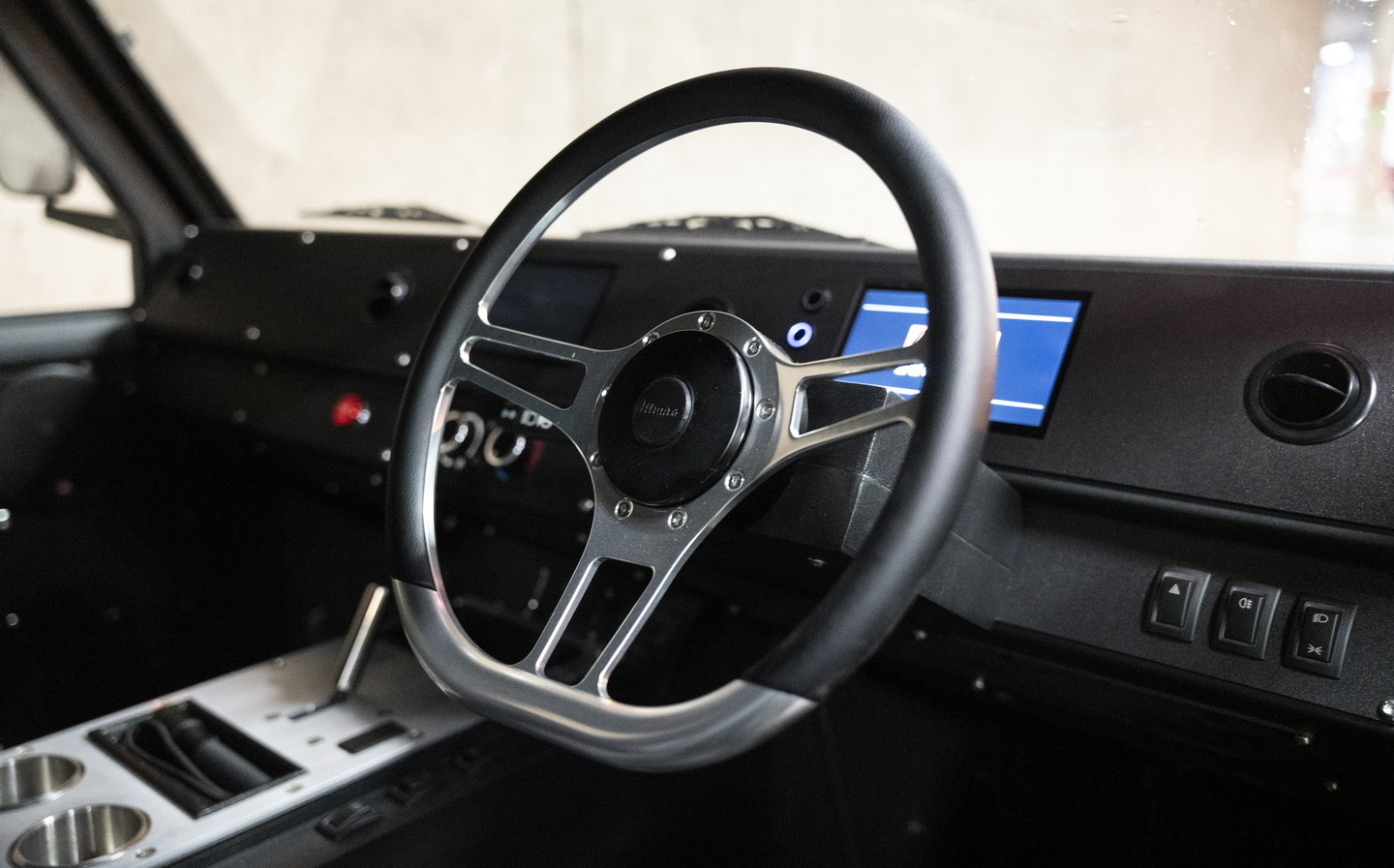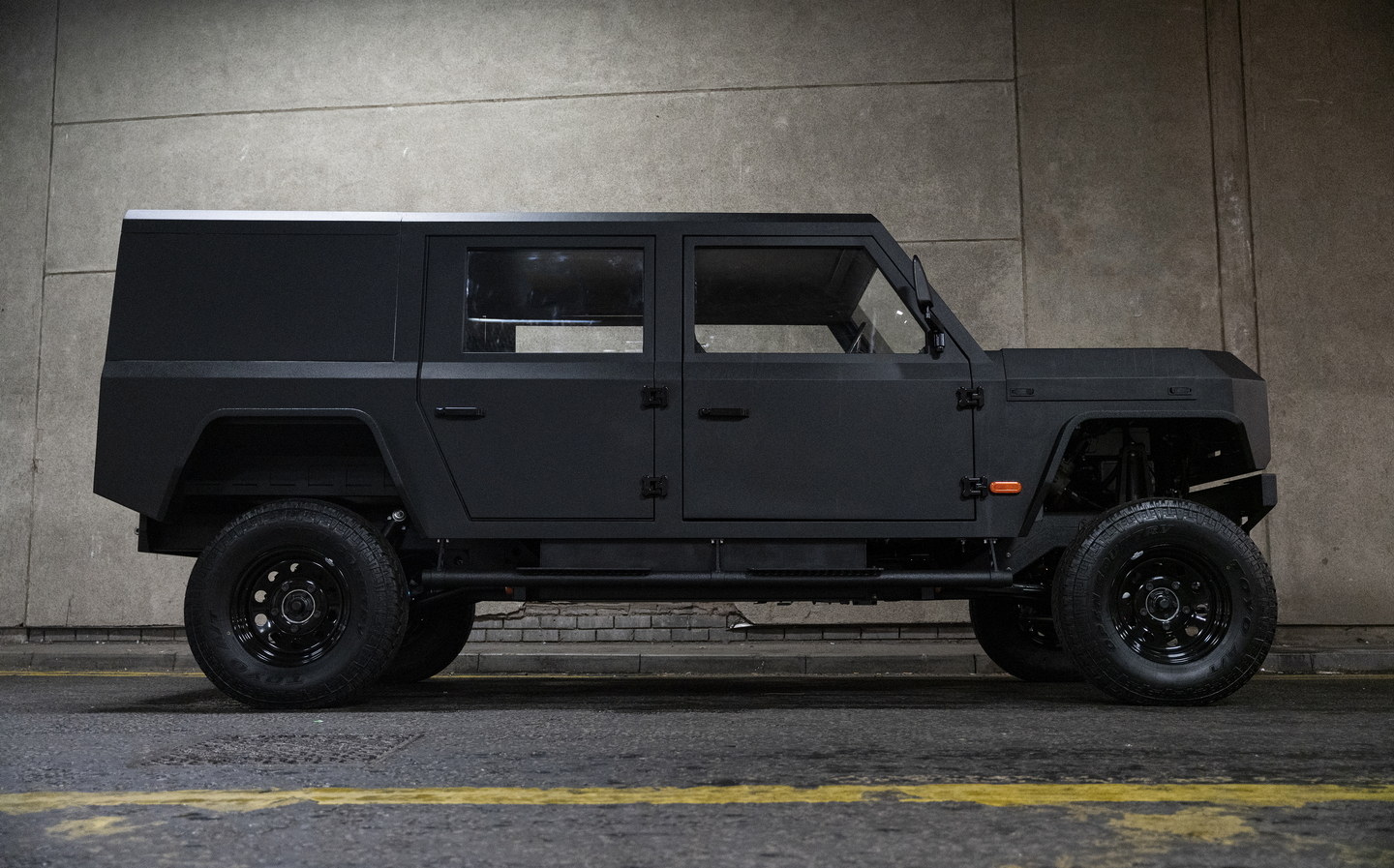Munro Mk_1 electric off-roader will be first volume-built Scottish vehicle in nearly 40 years
Take the high road, low road and everything in between
Scottish automotive start-up Munro has unveiled its first vehicle, a tough electric off-roader that the company says will be the first volume-built vehicle to be produced in Scotland since Peugeot-Talbot shuttered its Linwood plant in 1981.
The Munro Mk_1 is a five-door, five-seat 4×4 aimed at individuals and businesses in the construction, agricultural, mining, emergency rescue and remote infrastructure maintenance sectors, especially those that wish to reduce their CO2 emissions while still retaining the go-anywhere ability that the Munro promises.
The company was founded in 2019 by entrepreneurs and off-roading enthusiasts Ross Anderson and Russell Peterson, the latter of whom comes from a farming background and previously ran a contracting business.
“We had already taken measures to reduce our own environmental footprints and had a lot of experience driving our own EV, and got quite used to the instant torque delivery,” said Peterson, recalling how the company came into being.
“But the off-roader we were driving through the Highlands was combustion-engined, and it was really struggling on the steep climbs. So, we were musing how much better it would be with an electric motor.
“On the return journey, we stopped at a café in Braemar, where a bank of 50kW rapid chargers were sitting empty and unused. Parked up nearby was a large group of combustion-engined safari adventure 4x4s of a type that are no longer manufactured and will have to be replaced eventually.
“It dawned on us that there was a gap in the market for an electric-powered, four-wheel-drive, utilitarian workhorse. We envisioned a vehicle with ultimate, go-anywhere, off-road ability, unrestricted by road-derived underpinnings that limit the all-terrain ability of vehicles such as the 4×4 pick-up trucks that have come to dominate the market.”

With its boxy styling, there’s a visual lineage between the Munro and the old Land Rover Defender and it’s no surprise either that it looks a little bit like the cancelled Bollinger B1 and B2 from the troubled American electric off-roader maker Bollinger Motors, as the man responsible for the Munro’s form-following-function looks, Ross Compton, previously led projects at Bollinger.
The Munro is offered with a choice of either 61kWh or 82kWh battery packs, and with single electric motors of 295bhp or 375bhp in output.
AC charging at 7kW or 22kW is possible, while the company says the Munro features DC charging capability, though at what speed it declined to mention.
That motor is of the more compact axial flux variety than the radial flux motors usually found in electric vehicles, which allows the weight of the powertrain to be cut to around 40kg — the company claims it’s half the weight of the alternative technology.
Because the motor spins at between 5,000rpm and 8,000rpm rather than the usual 15,000rpm, the designers were able to eliminate the reduction gear, further saving weight, meaning that the power is sent directly from the motor to the transfer case of the two-speed transmission.

Peterson asserts that the company never even considered the typical dual-motor skateboard-style arrangements of most electric SUVs and were instead adamant that using a single motor mounted between the two front seats was the best option in terms of weight distribution and torque delivery.
“The best way to drive off-road is to ensure that the same amount of torque is delivered to each wheel and that all the wheels spin at the same speed,” he said.
“And no matter how clever your computer is, you’re still going to have problems if you’ve got a split driveline in the vehicle.
“And the other thing is many electric SUVs and pick-ups on the market tout a big headline figure like 600 horsepower. But when you think about it, it’s 400 horsepower at the back wheels and 200 at the front. And as soon as the vehicle loses traction at the back wheels, you’ve only got the power of the front motor to pull you out. So that’s one of the reasons we decided to fit one big electric motor in the middle and power all the wheels using a mechanical driveline.”

With a top speed of 80mph, the Munro is geared for torque rather than outright pace and, even if the 375bhp model can hit 62mph from rest in 4.9 seconds, the company says that the emphasis is still on off-road utility.
Contributing to the Munro’s off-roading nous is its central locking differential with the option of secondary locking differentials at the front and rear. Also helpful is its 480mm of ground clearance, 800mm wading depth and almost non-existent overhangs.
The Mk_1 is, like the most capable 4×4 vehicles, based on a galvanised steel ladder chassis, with the body mounted to the frame at eight points. Potential buyers will have a choice of rubber mountings for greater refinement or solid aluminium spacers for greater rigidity and hauling heavier payloads.
The Munro’s maximum braked towing capacity is, incidentally, a very healthy 3,500kg with the ability to haul a ton in the rear load bed that is designed to accommodate a full-sized euro-pallet.
“The engineering is unashamedly agricultural in nature,” said Peterson.
“Some people see the term agricultural as potentially derogatory, but at Munro, we certainly don’t.
“Agricultural vehicles feature some of the most sophisticated technology you can imagine. But above all, they are engineered to do the job, no matter how much punishment they soak up, and to keep doing it year after year. The Munro has been built to the most robust standards possible and to be fully operational in 30, 40, 50 years’ time.”

The agricultural nature of the Munro is also underscored by the fact that as well as giving a maximum range of 190 miles between charges, the company also provides a figure in hours (16), as with a tractor.
And its interior is designed for the rigours of life as a workshorse.
“Our customers should be able to throw things in the back without feeling bad,” smiles Peterson.
“We’ve used thick plywood for the lining of the cargo area. It gives a nice definition between the steel and aluminium material, but more importantly it’s tough and extremely hard-wearing. To ensure the cargo stays secured, we’ve used aluminium tracks and fastenings, each of which is strong enough to hold 400kg of weight in place.
“As any tractor driver knows, after you have finished fitting an implement or closing the tailgate on a trailer, you’re left with the problem of where you put your dirty gloves when you get back in the vehicle. With the Munro, you can just pop them in one of the external saddle bag lockers at the front, which is also ideal for carrying smaller hand tools.”
Agricultural though it may be, it still makes ample concessions to the comfort of its users. There’s a six-speaker sound system, for instance, with a pair of touchscreens and Apple CarPlay/ Android Auto compatibility.
There are two USB sockets and two wireless phone charging pads as well, but one of the most useful may be the pair of three-pin domestic plug sockets, which are there, the firm says, for powering kettles and microwaves to keep users warm and well-fed when working outdoors. No doubt they’ll prove useful for power tools, too.
Munro plans to begin production of the Mk_1 in 2023 at its East Kilbride facility outside Glasgow with the aim of hand-building 250 units per year initially. The plan is to scale up production to 2,500 vehicles per year through increased emphasis on CNC (Computer Numerical Control) machining and robotisation, and a new factory elsewhere in Scotland.
While the company is ambitious in its plans, it doesn’t seem totally unrealistic, with the goal of expanding into EU and US markets using the rules that exist for low-volume manufacturers allowing it to circumvent some of the certification issues for mass-market cars.
It plans for other models and variants of the Mk_1, too, the second of which will be unveiled early in 2023.
Pricing for the Munro Mk_1 starts from £59,995.
Related articles
- After reading about the new Munro off-roader, you might be interested in Electrogenic’s electric conversion kit for the Land Rover Defender
- Read why Jeremy Clarkson labelled the Defender Hard Top “a bit pointless”
- And don’t miss Will Dron’s review of the current Land Rover Defender
Latest articles
- Audi S5 2024 review: Audi smells blood in battle with BMW
- F1 2024 calendar and race reports: What time the next grand prix starts and what happened in the previous rounds
- AA calls for graduated licensing scheme to prevent deaths of young, inexperienced drivers
- Porsche Macan 2024 review: Entry-level electric SUV is a marathon runner, not a sprinter, but that doesn’t affect its all-star athletic appeal
- How your 10-year-old can get behind the wheel of a Mercedes, Porsche or Bentley … and why you should do it
- Lotus Eletre 2024 review: Is the electric Lotus SUV an abomination or a class act?
- Prices for hot Nissan Ariya Nismo announced … red sill strip light included
- Return of the Renault 4: Full details and images from Paris motor show unveiling
- Elon Musk unveils ‘Cybercab’ robotaxi for claimed 2026 rollout and offers guests first rides … in controlled environment



















